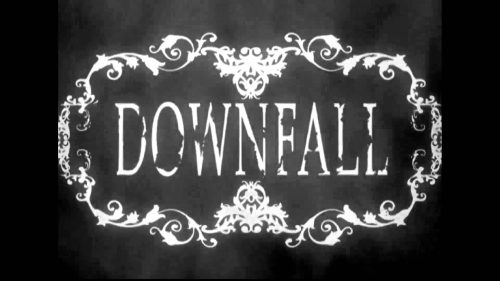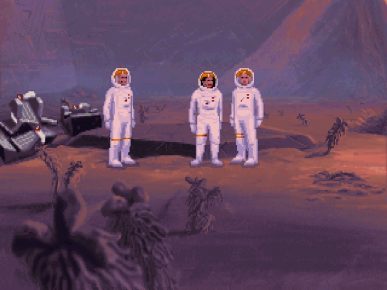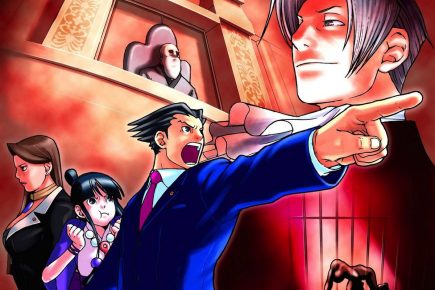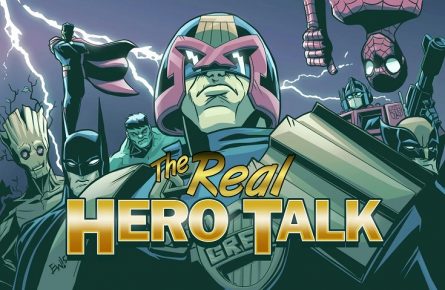Adventure Game Roundup


As part of an ongoing effort to reduce the size of my Steam “Stack of Shame”, I’ve been on somewhat of an adventure game binge as of late. This is a genre that I’ve previously cited as central to my early development as a PC gamer. Despite long periods away from adventure gaming I always eventually find my way back. With just about every Steam sale throughout the calendar year featuring bargain pricing on both classics and overlooked titles, money is certainly no obstacle. For the uninitiated, the sheer volume of choice is probably the greater challenge to getting into adventure games.
Below are several highlights from my recent experiences. All three are short in duration (under 5 or 6 hours at most) and can regularly be found on sale for five dollars or less. If current trends are any indication I will probably have another few adventure game impressions in the near future.

Downfall
During my previous review of The Cat Lady, I made brief mention of an earlier game by the same developer. Downfall was the first release from Harvester Games in 2009. After the success of The Cat Lady in 2014, creator Remigiusz Michalski announced that Downfall would be remade to match the style of its sequel, featuring improved visuals, music and added voice acting. After some delays the updated Downfall arrived in mid-2016.
The two main characters in Downfall, Joe and Ivy Davis had a short but memorable cameo in The Cat Lady, a game that I absolutely love: needless to say, I had been eagerly anticipating this remake. Having not played the original Downfall I can’t speak much to what was added or how greatly in was improved. What I can say is that while it doesn’t quite reach the heights of The Cat Lady, it is still an excellent game in all respects.
R. Michalski’s macabre writing and sensibilities permeate the entire experience of Downfall. The art is starkly black and white for much of the game, with vivid flashes of red, for effect. The brilliant soundtrack is once again primarily the work of Michalski’s brother Michael (micAmic), along with notable songs by Cat Lady contributor ‘Warmer’ – who also just happens to be the voice of Joe.
The game’s themes are primarily of psychological horror, love, depression and obsession. The plot centres around Joe and Ivy’s faltering relationship, and a last ditch effort to salvage it. Spending a night away together at the pleasant sounding ‘Quiet Haven Hotel’ sounded like a good idea, until the shit begins to hit the fan. After an unsettling argument ends their evening abruptly, Joe finds himself alone the next morning, unsure what has happened to Ivy. It is not entirely clear whether Joe is even awake or caught in an ever-deepening nightmare. All he knows is that he needs to find Ivy at all costs, to save her from something he scarcely understands.
It would not be entirely accurate to describe The Cat Lady as a sequel to Downfall or this remake as a prequel, given there are sequences in both games that appear to run concurrently. In fact, the climax and ending of Downfall arguably take place after the final events in the second game. Certain supernatural events and even a touch of the unreliable narrator effect seem to be at play – it would be difficult to say much more without spoiling both games.
I can confidently say that fans of R. Michalski’s work to date will enjoy this game. The art style, acting, and music all add up to be much greater than the sum of their parts. Many games with far more ambitious goals and expansive budgets fail to achieve this level of creativity. I await with anticipation the next Harvester Games title, Lorelai which appears to take place in the same twisted continuity.

The Shivah
Originally released in 2006, an updated version of The Shivah, “Kosher Edition” found its way onto Steam in 2013 with improved graphics, music and voice recordings. I can’t say I recall ever playing a point-and-click adventure game with a more modest scope, but it was a memorable experience, nonetheless.
‘Shivah’ is a Hebrew term referring to a week-long period of mourning for a relative in Judaism. The game’s protagonist, world-weary Rabbi Russell Stone is drawn into the events surrounding the passing of a former member of his congregation. The player is not initially aware of the significance of these connections, or the relevant personal histories, but the details are slowly unraveled over the course of the story.
The usual adventure game mechanics are here: investigate your surroundings, find ways to make use of your limited inventory to solve puzzles, point, click, etc.. But The Shivah also does some unusual things, adding in a rabbinical conversation system in which failure has consequences. You’ll also walk away from the game with a few additional Yiddish terms to use in your daily life.
Though notably short, winnable within 2-3 hours of play-time, The Shivah is an interesting showcase of the talents of Wadjet Eye Games founder Dave Gilbert, who’s Blackwell adventure game series is well regarded. It would be over-simplifying the game to describe it as ‘Rabbi plays private detective’, since there are some deeper examinations of moral choices and matters of faith on offer here as well.

The Dig
Though I was more of a Sierra man back in the day, I played a number of well-known LucasArts adventure game titles in the 90’s. One game I had remembered hearing about but missed a chance to try on CD-ROM was 1995’s The Dig. With a 2009 re-release on Steam, I eventually stumbled across it, bought it and promptly forgot about it again for several years.
Finally deciding to give it a try in 2017, this was a rare opportunity to experience an adventure game of that era I had never played before. While there were definitely some welcome nostalgic vibes here, The Dig was also an exercise in frustration. Some games are perhaps best left behind in the 90’s.
Conceived by Steven Spielberg as a story idea for an Amazing Stories episode, an plan to instead develop it as an adventure game via LucasArts was drawn up in the late 80’s. After an unusually long development cycle, during which the story concepts were radically changed several times, it launched on MS-DOC and Mac.
The plot initially centres on an asteroid headed on a collision course with earth. A five-person team of astronauts is dispatched via shuttle to plant charges and knock the small planetoid into a safe orbit. The story shifts into a more mysterious, science fiction direction when it is determined there is alien technology below the surface of the rock. After a strange device transports three of the team members to a bizarre, seemingly deserted alien world, the challenge truly begins – how can they decipher their surroundings and find a way back home?
Though the controls and graphical style might be familiar to LucasArts adventure aficionados, the tone is quite different. What little humour is on offer, often falls flat, not helped by the voice performances. There are some talented actors here, including veteran Steven Blum and Robert Patrick in the lead role, but the dialogue often grates and the characters are hard to like, or even tolerate. The graphics and occasional 3D cut-scenes, courtesy of Industrial Light and Magic, are impressive for their era but aren’t exactly timeless.
What truly drags down my enjoyment of a game like The Dig down are the puzzles, both in their difficulty level and execution. Trial and error are normal parts of adventure games: trying different inventory items with different effect and creative solutions to overcome obstacles. The Dig, however, offers you so little context to work with that often you don’t’ even realise you’ve encountered a puzzle. One particularly infamous section involving assembling a sea-turtle creature’s bones would be hard to fathom for anyone save perhaps a trained herpetologist. Challenging puzzles have always been an element of this genre, but The Dig crosses the line from tough to simply obtuse, vague and overly frustrating.
Even if you don’t find the puzzles hard, you’ll be fighting the game’s visuals and colour palette much of the time, struggling to see what you can and can’t interact with. That inanimate patch of brown, sand or grey may in fact be the crux of solving an important problem – good luck noticing it. Dial your mouse sensitivity right down and be prepared to drag your cursor over every square inch of pixel, otherwise you won’t know for certain whether you’ve found what you don’t even know to look for.
Being armed up front with a very detailed walkthrough is the only way to enjoy The Dig. Look at it as a guided archaeological expedition of your own, a chance to experience gaming of the past, but without all the rage inducing frustrations that come with the puzzles this game sets in the players path. There is a somewhat engaging story, enjoyable soundtrack and nostalgic experience here to be had if you accept it for what it is: a deeply flawed example of a LucasArts 90’s adventure game that doesn’t measure up to its contemporaries in terms of quality.








Leave a Reply